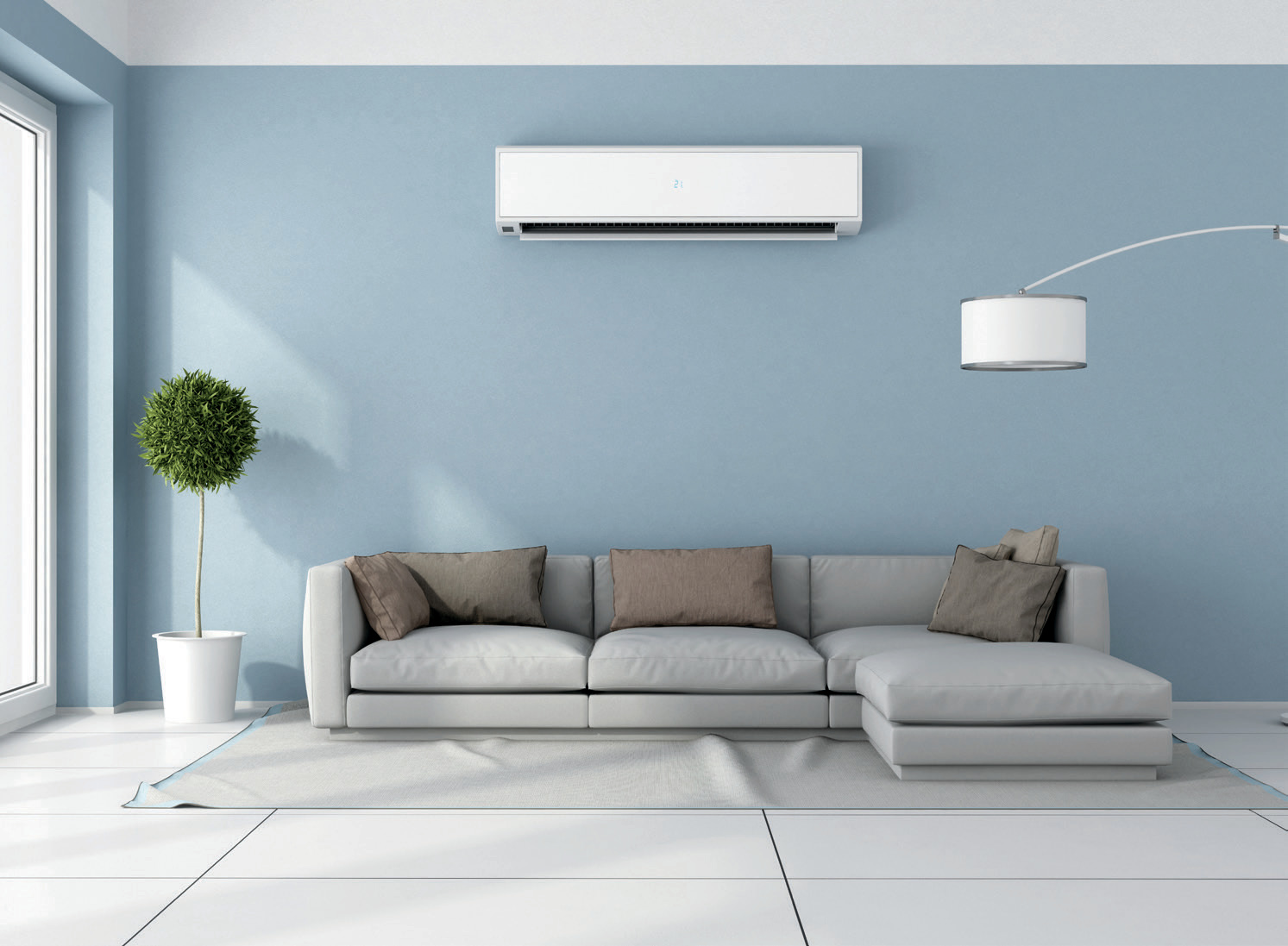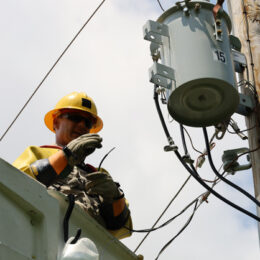

PPEC Energy Advisor
A ductless air conditioner, also referred to as a mini-split system or air source heat pump, offers a variety of options for heating and cooling, particularly for older homes and buildings. Several years ago, mini-split models were thought to be inefficient for colder climates, but these systems have made great strides, making them a more viable option for most U.S. regions.
The two major components of a mini-split system are an indoor air-handling unit (evaporator) and an outdoor compressor/condenser. In many ways, mini-split air conditioners operate like conventional air conditioning systems. In cooling mode, the system transfers heat from inside the home to the outside. With a central air system, cold air is blasted throughout all the ducts in the home from a single air handler, such as a large fan in an attic or basement. Because a mini-split can blow air from up to six independent air handlers, it can regulate temperatures for different rooms or areas inside the home.
Mini-splits are a viable alternative to duct systems for home additions or for homes where a duct system may not be practical. When a duct system is too expensive to install, a mini-split system can efficiently heat and cool a space while keeping installation costs down.
A mini-split can also settle thermostat disagreements in a home or business for those with different comfort preferences. For example, to give teachers control over the temperature in their spaces, mini-split systems are frequently installed in classrooms.
Compared to conventional HVAC systems, mini- splits can significantly reduce energy consumption and have the potential to save up to 30% on cooling costs and 50% on heating costs. Additionally, inverter technology, which enables variable-speed operation, is frequently included with mini-split systems. This results in increased energy efficiency and a cheaper cost of operation as the system adjusts its output based on the actual heating or cooling demand.
In addition to greater control over heating and cooling, mini-splits can also be managed with a mobile app, smart thermostat or remote control. They provide better air quality, and homeowners can easily replace the filters themselves, saving money on the pricey duct cleanings needed for conventional air conditioners. A common feature of mini-split systems is reheat dehumidification, which maintains a steady room temperature while lowering humidity.
A few factors should be considered before installing a mini-split system. Determining the right size and quantity of units is a key first step. The location of the system is another important factor to consider. A mini-split should be installed where it will help maximize air distribution throughout the home. A qualified contractor can offer advice on these factors.
For many homeowners, a mini-split ductless heating and cooling system can be a fantastic alternative for heating and cooling. Contact me at 800-686-2357 or email me at pniagu@ppec.coop with any questions.
PPEC members are eligible for rebates of up to $300 when installing a mini-split system. Visit PPEC.coop/rebate-programs.




